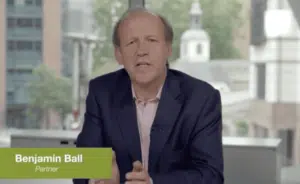You are on a first date, and right from the first moments, your partner shares intimate details of their past.
This early sharing can create an atmosphere that is both intriguing and destabilizing.
This is what is known as floodlighting, a phenomenon more common than it seems.
This type of intense emotional sharing can surprise and even overwhelm, especially when it occurs before trust has been established. Some may see it as an authentic attempt to create a deep connection, while others may feel overwhelmed by its suddenness. Understanding the motivations behind floodlighting helps navigate these early interactions with discernment. It is essential to recognize when this openness fosters true intimacy or when it risks disrupting the relational balance.

The types of the Enneagram most likely to overshare are primarily types 2, 4, 6, and 7. Each of these types has distinct motivations and traits that lead them to reveal more personal information than necessary.
The type 2, known as the Helper, seeks to establish deep connections by sharing personal experiences to demonstrate their altruism and loyalty. This tendency can sometimes overwhelm their conversation partner with premature emotional overload.
The type 4, the Romantic, has a rich inner life and aspires to be fully understood and authentic. Their desire for depth drives them to quickly reveal intimate aspects of their experiences, which can surprise or destabilize others.
The type 6, the Anxious, uses excessive sharing as a way to seek security and reassurance. Their constant need for validation leads them to express many concerns from the very first exchanges, thus trying to establish rapid trust.
Finally, the type 7, the Optimist, is naturally inclined to share many stories and experiences to maintain a positive and engaging atmosphere. This propensity for enthusiasm can sometimes dilute the quality of interactions by flooding conversations with multiple pieces of information.

In the realm of human relationships, communication plays a crucial role. However, some individuals tend to overshare, a behavior often referred to as floodlighting. This phenomenon manifests as excessive exposure of emotions and personal experiences, sometimes even before solid trust bonds have been established. Understanding which types of the Enneagram are most prone to this behavior allows for better management of interactions and fosters balanced relationships. This article explores in depth the different types of the Enneagram likely to overshare, analyzing the motivations and implications of this behavior. We will also address the underlying psychological mechanisms and suggest pathways for healthier and more authentic communication.
What is floodlighting?
Floodlighting is a term popularized by Brené Brown, referring to the act of emotionally overdosing someone by sharing intimate details without prior trust foundation. This practice can leave the listener confused, overwhelmed, or even honored by the sudden intimacy. Unlike vulnerability, which is shared with intention and discernment, floodlighting is often impulsive and lacks filtering. For example, during a first date, a person might reveal childhood traumas without context, creating an unbalanced dynamic. A recent study shows that this behavior is more common than one might think, influencing the quality of first interactions. To learn more about how floodlighting manifests among different types, check out our article on the instinctual variants of type 2 of the Enneagram.
Type 4: The champions of floodlighting
Type 4s of the Enneagram possess a rich emotional world and a deep desire to be seen for who they truly are. For them, oversharing can seem like a shortcut to intimacy. They do not shy away from relief, desire, or pain, and often lead with these feelings. For example, during a first date, a type 4 might share their struggles with anxiety within the first few minutes. This behavior aims to quickly establish a deep connection but can sometimes overwhelm the other person if they are not prepared for such intensity. Their main motivation is to feel authentic and fully understood, which drives them to share without moderation. To explore further how type 4s navigate their relationships, discover our analysis of the subtypes of Enneagram type 7.
Type 2: The compassionate confessors
The type 2s of the Enneagram often feel that love must be earned. In budding relationships, they may overdose emotional stories about what they have given or how they have been hurt, hoping to demonstrate their emotional depth and loyalty. For example, a type 2 might share intimate details about their personal sacrifices from the very first exchanges, seeking to establish a link based on trust and altruism. This approach aims to show that they are devoted and reliable, but it can sometimes create an imbalance and deter the other person who might not be ready for such premature intimacy. Their deep need is to feel loved and valued, which drives them to use oversharing as a means of emotional connection. For a deeper understanding of the motivations of type 2s, consult our exploration of the instinctual variants of type 2.
Type 6: The anxious sharers
The type 6s of the Enneagram tend to externalize their anxiety by talking a lot. When they feel nervous or uncertain, they may overdose personal information to test the loyalty of the new relationship. For example, a type 6 might share details about past betrayals or fears of abandonment from the first date, trying to establish a sense of security and trust. This behavior is an attempt to prevent perceived threats and reinforce the relationship by obtaining constant reassurances. However, this approach can leave the other person feeling overwhelmed or overpowered by the intensity of the shared information. Type 6s often use oversharing as a defense mechanism to manage their fear of abandonment or betrayal, without realizing it may create a push-pull emotional dynamic in the relationship.
Type 7: The rapid storytellers
The type 7s of the Enneagram are natural storytellers and social butterflies. Their tendency to overshare often results from their overflowing enthusiasm and desire to maintain a positive atmosphere. For example, a type 7 might share a multitude of funny stories or wild experiences from the very first interactions, seeking to entertain and quickly connect with others. This approach helps them avoid confronting difficult emotions or uncomfortable situations, focusing instead on pleasure and excitement. However, this can sometimes give an impression of chaos or imbalance in the conversation, leaving the other person overwhelmed by the constant flow of information. Type 7s often use oversharing as a strategy to control the narrative and maintain a light and engaging dynamic. To explore how type 7s interact in different situations, check out our discovery of the subtypes of Enneagram type 7.
Types less likely to be floodlighters
While some types of the Enneagram are more prone to oversharing, others tend to withhold their personal information. The types 1, 5, 8, and 9 display greater reserve and an ability to filter what they share. For example, type 5s are typically reserved and prefer to keep their thoughts to themselves, while type 1 values control and decorum. Type 8s prioritize strength and independence, rarely sharing their vulnerabilities unless they have deep trust. Type 9s, on the other hand, seek to maintain peace and avoid conflict, which drives them to limit excessive sharing. Understanding these differences helps recognize relational dynamics and adapt communication based on the personality type encountered. To learn more about variations of types, explore our articles on the instinctual variants of type 1 and the literary heroines associated with each type.
The motivations behind oversharing
Oversharing is not always a destructive behavior; it can be motivated by a genuine desire for connection or by defense mechanisms. For example, some individuals share excessively to feel understood or to seek empathy. Others may use oversharing as a way to test the loyalty or receptivity of the other person. Motivations may also include a decrease in emotional control, attempts at self-soothing, or a need for external validation. It is important to distinguish the intentions behind oversharing to understand whether this behavior is a connection strategy or a manifestation of stress and anxiety. Open communication and better self-awareness can help manage this behavior in a more balanced way. To deepen the psychological reasons behind oversharing, explore our resources on what each type of the Enneagram would do with a time machine.
Impact of floodlighting on relationships
Floodlighting can have varied effects on interpersonal relationships. When well received, it can foster rapid intimacy and deep understanding between both parties. However, if oversharing is perceived as emotionally overwhelming, it can create distance or desynchronization in communication. For example, in a first date, an overload of personal information can make the other person feel drowning or inept at handling the emotional weight. Furthermore, floodlighting can lead to a misperception of the intentions or capacities of the other, thus influencing the future development of the relationship. It is crucial to find a balance between transparency and respecting emotional boundaries to maintain healthy and harmonious relationships. Understanding the impact of floodlighting allows for better navigation of social interactions and promotes balanced and respectful communication.
Strategies for managing floodlighting
For those who wish to reduce oversharing, several strategies can be implemented. First, developing an awareness of one’s own motivations and emotions is essential. Practicing reflection before sharing personal information can help evaluate whether the moment is appropriate. Additionally, establishing clear emotional boundaries and learning to actively listen to the other person can balance the dynamic of the conversation. It may also be beneficial to focus on neutral or light topics during initial interactions, gradually building trust and intimacy. For those who find it difficult to control their tendency to overshare, consulting a professional or attending workshops on communication can be helpful. By adopting these strategies, it is possible to create more balanced and satisfying relationships. Discover our additional tips in the three instinctual variants of Enneagram type 1.

“`html
FAQ
Q: What is floodlighting in the context of the Enneagram?
A: Floodlighting refers to the act of oversharing personal and emotional information right at the beginning of a relationship, often before trust or connivance has been established.
Q: Which types of the Enneagram are most likely to practice floodlighting?
A: The types 2, 4, 6, and 7 of the Enneagram are the most prone to floodlighting. Each type has specific motivations, such as the desire for authentic connection, seeking validation, or wanting to test others’ loyalty.
Q: What are the motives behind floodlighting for these types of the Enneagram?
A: The motivations vary by type:
- Type 2: Seek to be loved and valued by sharing their experiences and personal sacrifices.
- Type 4: Desire to be authentically seen and understand if the other can accept their emotional depth.
- Type 6: Use floodlighting to establish a sense of security and test the reliability of others.
- Type 7: Share impulsively to maintain a positive atmosphere and avoid negative emotions.
Q: Is floodlighting always negative in relationships?
A: No, floodlighting is not inherently negative. When motivated by a genuine desire for connection and the receiver is receptive, it can foster intimacy. However, if motivated by anxiety or the need to control the narrative, it can become overwhelming and harm the relationship.
Q: How does floodlighting affect interpersonal relationships?
A: Floodlighting can create deep and immediate bonds if both parties are ready and receptive. Conversely, it can also lead to confusion, emotional overload, or even a feeling of being overwhelmed, especially if sharing is too rapid or inappropriate.
Q: How can you recognize if someone is practicing floodlighting?
A: Floodlighting manifests through quick and intense sharing of personal, often emotional, information right from the first exchanges. The person may bring up deep or sensitive topics without having established sufficient trust.
Q: How to manage floodlighting in a new relationship?
A: It is important to maintain healthy boundaries and communicate openly with the other person. Expressing one’s own needs regarding pace and space can help balance the sharing of information and build a more balanced relationship.











